This is the start of an interesting trip into the history and meaning of the Hand of Fatima, also called the Hamsa Hand. People have been drawn to this strong sign for hundreds of years because it has deep religious and cultural meanings in many cultures.
People think that the Hand of Fatima, which is named after Prophet Muhammad’s daughter Fatima Zahra, can protect them from evil and bring them happiness, fertility, and benefits. Its unique shape looks like an open hand with an eye in the middle, which stands for God’s watching eye or divine protection. Scholars say it started in Mesopotamia and Phoenicia in ancient times and then spread to other countries.
Due to its global appeal, it has been used a lot throughout history and across borders. The Hand of Fatima is on jewelry, home art, pictures, amulets, and talismans all over the world. Come with us as we learn about the history, meaning, and importance of this famous symbol that continues to amaze and honor people from all walks of life.
Origins and Significance of the Hamsa Hand
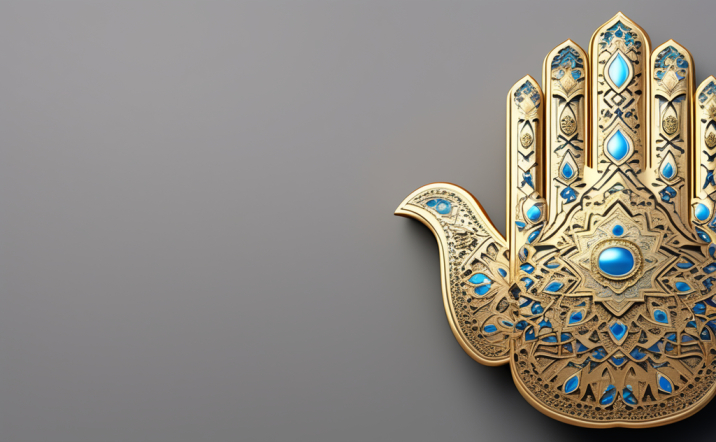
Tracing the Roots: From Ancient Times to Present
You may also know the Hamsa Hand as the Hand of Fatima. It has a long past that goes back to very old times. Its roots can be found in many cultures, such as those in old Mesopotamia and Egypt. Since it was first used, the sign has changed and grown to fit different cultures and beliefs.
Because it stands for strong things, the Hamsa Hand has always been important in society. People think it can keep them safe from evil and bring them luck and benefits. It is thought to be a charm that keeps away bad energy and brings peace into your life in many countries.
The Hamsa Hand in Diverse Cultures
The Hamsa Hand is important for more than just its historical background. Many different cultures around the world use this sign, but each one interprets it in their own way. It stands for the hand of God or spiritual safety in Judaism. In Islam, it is linked to the Hand of Fatima, who is the daughter of the Prophet Muhammad.
In addition, the Hamsa Hand is part of the customs of many other countries. In Hinduism and Buddhism, for example, it refers to the body’s chakras, or energy centers. It’s seen as a sign of faith and healing by some Native American groups.
This exchange between people from different cultures shows how symbols like the Hamsa Hand can bring people from different backgrounds together. It’s a lesson that even though we are different, there are greater things we have in common that bind us together.
Evolving Significance and Interpretations
Over time, different religious systems have come up with different ways to understand the Hamsa Hand. Its main meaning is still safety and gifts, but different cultures may have different ways of understanding it.
For example, in Judaism, some people think that showing the hand with the fingers facing up means gifts and good luck. On the other hand, fingers pointing downward are thought to protect against bad forces.
In the same way, the Hand of Fatima is very important in Islam. It stands for power, beauty, and divine direction. People wear it as jewelry or put it up in their homes to bring good luck and keep away bad energy.
Multiple readings of the Hamsa Hand show that it has a global draw and can connect with people from all walks of life.
Understanding the Hamsa Hand: What Is It?
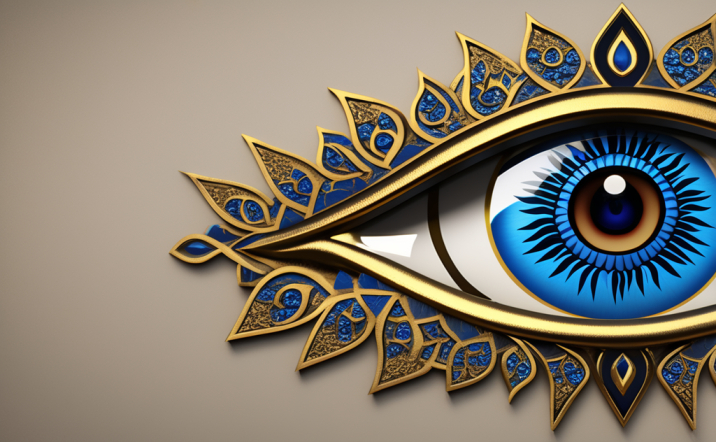
For many societies, the Hamsa Hand is a very important sign. It’s easier to understand how important something is when we know more about what it stands for, what makes it unique, and what it means.
Gain a comprehensive understanding of what the Hamsa Hand represents.
The Hamsa Hand, which is also called the Hand of Fatima, is an old sign that comes from North Africa and the Middle East. People who wear it or show it off are thought to be protected, lucky, and blessed. A hand-shaped charm is often shown with an eye in the middle. This is called the Evil Eye, and it is thought to keep away bad energy and keep you safe.
Learn about its distinctive features and symbolism.
A perfect hand with five fingers is what makes the Hamsa Hand stand out. It is often decorated with complex designs or symbols. Each finger stands for a different quality, like strength, power, security, fertility, and plenty. The palm is a sign of luck and gifts. The eye in the middle protects against evil.
The Hamsa Hand is a sign of peace in many faiths and cultures, such as Judaism, Islam, Christianity, and Buddhism. As an example:
- In Judaism: The Hamsa Hand represents divine protection from evil spirits or influences. It is associated with Miriam (Moses’ sister) and her role in leading women through difficult times.
- In Islam: The Hamsa Hand symbolizes the Five Pillars of Islam—the core principles that guide Muslims in their faith.
- In Christianity: The hand may be interpreted as a representation of God’s hand protecting believers from harm.
- In Buddhism: The Hamsa Hand signifies compassion and protection on one’s spiritual journey.
Discover why this symbol holds such deep meaning for many cultures.
One reason the Hamsa Hand has a lot of importance in many cultures is that it is linked to luck and safety. People believe that the hand-shaped symbol creates a wall of good energy that keeps away bad influences and brings happiness to the person who wears or owns it. These things tell us of the strength of faith, piety, and how all people are linked.
The Hamsa Hand is also popular around the world because it can be used in different cultures. People from all walks of life, faiths, and views can relate to what it means.
Symbolism and Usage of the Hamsa Hand

The Five Fingers: A Symbol of Strength and Power
People from many different countries see the Hamsa Hand, which is also called the Hand of Fatima, as a powerful sign with great meaning. The Hamsa Hand is a powerful sign of strength and power because each finger stands for a different trait or quality.
For example, the thumb stands for strength. In life, it means being able to get past problems and hurdles. The index finger stands for control and attention, helping people stay focused and determined as they work toward their goals. The middle finger represents unity and balance, which is a good reminder to keep our lives in order. The ring finger is a symbol of love and ties, showing how important it is to keep in touch with other people. Finally, the pinky finger is a sign of faith and insight. It tells people to believe their gut and connect with their inner selves.
When put together, these five fingers show strength and power as a whole. By living our daily lives with these traits, we can become more resilient, grow as people, and handle the ups and downs of life with grace.
The Eye in the Palm: Warding Off the Evil Eye
The eye that is built into the palm of the Hamsa Hand is one of its most noticeable features. This eye protects you from the bad things that come with having an evil eye. Different tribes have different ideas about how to protect themselves from this bad energy.
In some cultures, showing or wearing a Hamsa Hand is thought to protect against bad powers or people who wish others harm because they are jealous or envious. The eye is like a guardian that keeps an eye on the person who wears it or owns it.
In many places around the world, the idea of keeping yourself safe from the evil eye is strongly rooted. A lot of people wear amulets with the Hamsa Hand on them to keep themselves safe and bring them luck. If people believe in this protection sign, they can feel safe and keep away from bad forces that could hurt their health.
Hamsa in Daily Life: From Amulets to Art
In addition to its spiritual value, the Hamsa Hand shows up in many parts of daily life. It’s often used in jewelry, home decor, and other kinds of art, so people can show what they believe and feel the good energy that comes with this character.
A piece of jewelry with the Hamsa Hand on it can be worn for style and has spiritual meaning.
The Meaning of the Fatima Hand
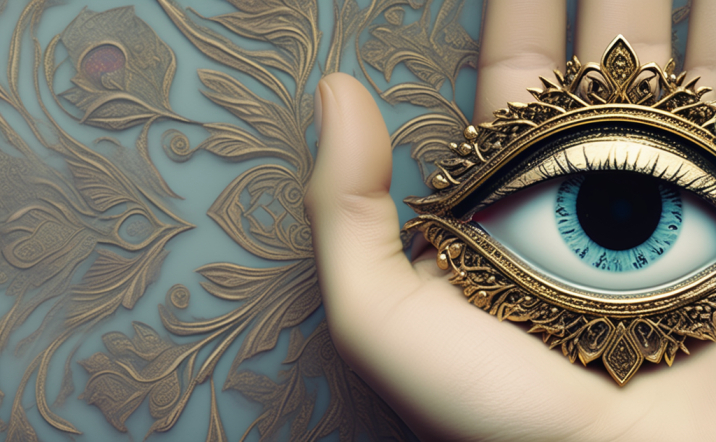
The phrase “Fatima Hand” has cultural and historical meanings, especially when it comes to the Hamsa Hand mark. It is important to know where this hand-shaped charm came from and what it means.
Historical and Cultural Significance
The Fatima Hand gets its name from the Prophet Muhammad’s daughter Fatima. In Islamic culture, Fatima is a holy figure who stands for cleanliness, righteousness, and safety. All over the world, people have used hand-shaped amulets for hundreds of years as strong protection against harm and evil.
Connection to Fatima, Daughter of Muhammad
The Hamsa Hand is linked to Fatima because she was a very important person in Islamic history. Muslims all over the world hold her in great respect as the daughter of Prophet Muhammad. The Fatima Hand is a symbol of her values and the things she left behind.
Symbolism Associated with the Fatima Hand
The symbolism attached to the Fatima Hand encompasses several elements that reflect its protective nature:
- Protection: The Fatima Hand’s main job is to keep away bad energies and keep you safe from evil spirits and other dangerous effects.
- benefits: Some people think that having or showing the Fatima Hand can bring benefits, luck, and plenty into their lives.
- Faith: The charm in the shape of a hand is also a warning to trust that God will guide and protect you.
- Unity: The five fingers on the hand represent unity between Islam, Christianity, Judaism, Hinduism, and Buddhism. This helps bring people from different backgrounds together.
- Female Strength: The Fatima Hand celebrates women’s freedom because it is linked to Fatima, who, in Islam stands for female strength and knowledge.
Throughout history, people have used different versions of the hand-shaped charm to protect themselves by putting them in clothing or decorating their homes.
People who want spiritual safety and benefits continue to love the Fatima Hand because of its deep-rooted meaning and link to Fatima, the daughter of Prophet Muhammad. Its broad use in many faiths and countries shows that it has a global draw for supporting faith, unity, and happiness.
Jewish Beliefs and the Hamsa Today
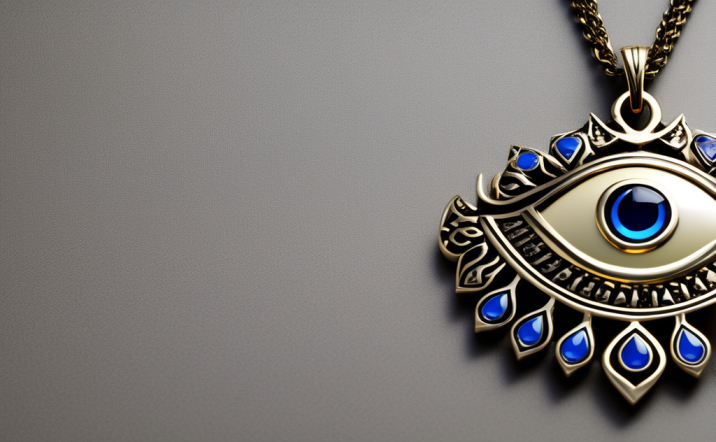
Kabbalistic Interpretations and Practices
The Hamsa Hand is very important in Kabbalah, the spiritual school of Judaism. People think it has strong defensive powers that can keep away bad spirits and bring good ones. Kabbalists say that each of the five fingers on the hand represents a different part of God’s power. The thumb stands for compassion, the index finger for strictness or discipline, the middle finger for harmony or balance, the ring finger for compassion, and the pinky finger for endurance.
The Hamsa Hand is often used as a spiritual defense in Kabbalistic activities. Some people, for example, wear clothing with this sign on it to protect themselves from harm. Some people put a picture or figure of the Hamsa in their homes or places of work to make them holy and protect them from bad energy.
Evil Eye in Judaism: Ancient Fears in Modern Times
People in Judaism have believed in the evil eye for a long time, and many people still worry about it today. This belief is based on the idea that some people have an evil gaze that can hurt or curse others just by looking at them. Many Jews used amulets like the Hamsa Hand to protect themselves from what they saw as a danger.
Many people believe that the Hamsa Hand can protect you from the evil eye. People think that its open palm form will protect its user from harm and block out bad energy. While wearing or showing off a Hamsa Hand, people ask for safety for themselves, their loved ones, and their things.
The Role of Hamsas in Contemporary Jewish Life
Even though Hamsas has its roots in old ideas and customs, it still has a lot of value in modern Jewish society. Jews all over the world use these symbols in events, traditions, and everyday life. To give you an example, you can often find Hamsa designs on wedding cards, decorations, and even the clothes people wear to the wedding. The Hamsa Hand is there to remind us how important it is to start a new part of our lives with safety and gifts.
Apart from that, Hamsas are often used as decorations or hung on walls as protection. They are always there to tell people about their Jewish identity and religion, and they also make people feel safe and comfortable.
Unity through Symbolism: Exploring the Hamsa Hand Across Cultures

People of many religions see the Hamsa Hand, which is also called the Hand of Fatima, as a sign of safety. People who follow Islam, Christianity, Hinduism, and other religions all have it. This global sign brings people of all religions together and helps them understand each other’s beliefs.
It is thought that the Hamsa Hand, which is linked to the Five Pillars of Islam, will bring good luck and keep you safe from harm. A lot of people wear it as a charm or amulet to keep bad spirits away and bring them luck. In the same way, the Hamsa Hand in Christianity stands for the hand of God or the hand of Mary, which means spiritual protection and direction.
In Hinduism, the Hamsa Hand is a holy sign called “Hansa,” which stands for cleanliness and transcendence. Spiritual growth is linked to it, and it’s a lesson to live a good life. The Hamsa Hand in Buddhism is a symbol for the “Five Dhyani Buddhas,” or five pearls of knowledge.
The fact that the Hamsa Hand can be found in these different religions shows that it can cross cultural barriers and bring people of different religions together. Even though these faiths have different views and ways of doing things, they share this sign of safety.
The Hamsa Hand is seen as a link between different countries around the world, not just for religious reasons. Its general draw helps people from all walks of life understand, tolerate, and get along with each other.
The beautiful thing about the Hamsa is that it can speak to everyone, no matter what religion or culture they are from. Its perfect shape, with an open hand and an eye in the middle, draws attention and makes you want to know more. This beautiful picture is used as a theme in jewelry, home decor, clothes, and art all over the world.
In many places, groups have started using the Hamsa Hand as a sign of peace and togetherness. For instance, the Hamsa Project is a group that works with artists from different countries to make works together that use the Hamsa Hand. These works of art show the variety of cultures that exist and encourage people from different backgrounds to talk to each other.
People who don’t have any religious or spiritual views may also use the Hamsa Hand, which shows that it can bring people from different cultures together.
The Significance of the Hamsa Hand for Divine Protection
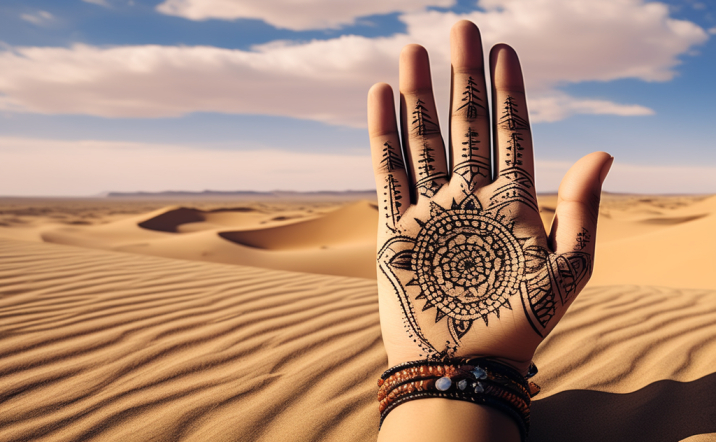
Divine Blessings and Protection in Beliefs
In many countries, the Hamsa Hand, which is also called the Hand of Fatima, has a lot of spiritual meaning. It is thought to bring spiritual benefits and shield the wearer from danger.
People with many different faiths see the Hamsa Hand as a strong sign that keeps away bad spirits and brings good luck. A lot of different faiths use this sign, like Judaism, Islam, and Christianity.
One of the most important things about the Hamsa Hand is that it can bring spiritual benefits. People who wear or show this sign often do so because they think it will bring good energy into their lives. They think it will bring them happiness, wealth, and success.
It is thought that the Hamsa Hand will shield you from harm. It has a complicated pattern with an open hand and an eye in the middle, which is often called the “evil eye.” It is believed that this eye can keep away evil forces and shield you from bad energies that are aimed at you.
Prayer and faith are very important for calling on the divine gifts and safety that come with the Hamsa Hand. A lot of people pray while wearing or carrying this sign because they want to get help, strength, and protection from higher forces.
In Jewish custom, for example, people may say prayers like the Shema or the Psalms while touching or kissing the Hamsa Hand pendant when they are feeling down or want to connect with God. This act is a sign of their faith and hope that God will help them.
Similarly, in Islamic society, people who believe in protecting themselves from evil can say certain lines from the Quran while carrying a Hamsa charm or putting it in their homes. Their faith and the act of repetition strengthen their trust in divine protection.
The idea that the Hamsa Hand brings heavenly benefits and safety is deeply rooted in cultural beliefs and practices. It’s a physical sign of your faith that brings you comfort, peace, and hope when things are hard.
Different Names and Forms of the Hamsa Hand
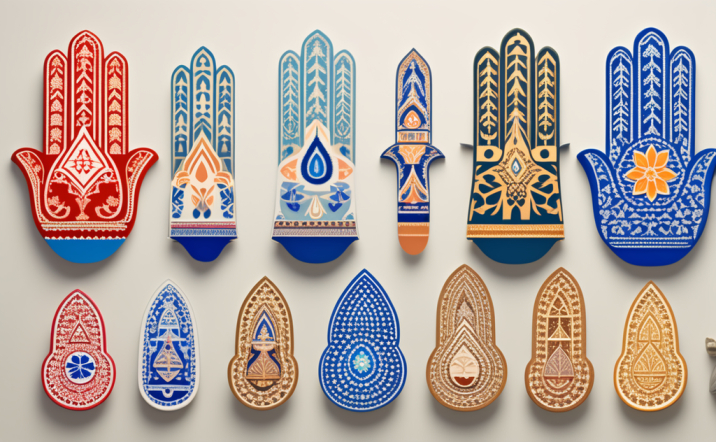
Regional Variations and Interpretations
In many parts of the world, the Hamsa Hand, which is also called the Hand of Fatima, is a very important spiritual image. Different cultures have changed and viewed this old sign in different ways, which is why there are unique regional versions.
The fact that the Hamsa Hand looks different in different parts of the world is one of its most interesting features. It comes from North Africa and the Middle East, where it is usually shown with the right hand open and an eye in the middle. People think that this eye, which is sometimes called the “Evil Eye” or “Nazar,” can protect you from evil forces. The open hand stands for good luck, strength, and power.
People who are Jewish call the Hamsa Hand “Hamesh” or “Khamsa.” It’s also shown as an open hand, but the eye in the middle is missing. Instead, it might have Hebrew letters or signs, like the Star of David. In Judaism, the Hamsa Hand is a very important sign of divine protection and good luck.
We find more versions of this powerful sign as we travel to different parts of the world. People in India call it the “Hand of God” or “Hansa,” which means “purity” or “divinity.” In the Indian form, there are often lots of elaborate designs and patterns that come from Hindu myths.
When you get to Europe, especially Mediterranean countries like Greece and Turkey, people have their own ideas about what the Hamsa Hand means. Along with the hand-shaped amulet, these versions often have blue beads or charms added to keep away bad spirits or bring good luck.
It’s important to remember that the designs vary from place to place, but they all have the same main idea: they protect against evil and bring good luck to the person who has or wears them.
The location of the events has a big impact on how they are understood. Along these lines, people in North Africa and the Middle East have long believed in the evil eye and the need to be protected from it. The shape of the Hamsa Hand, with its eye in the middle, shows this idea.
Similarly, Jewish society puts a lot of value on God’s safety and gifts. That’s why their form of the Hamsa Hand often has Hebrew letters or other Jewish images on it.
Promoting Peace with Hamsas for Peace Initiatives
Discovering the Symbolic Power of Hamsas
A lot of places around the world use the Hamsa Hand, which is also called the Hand of Fatima, as a religious and cultural image. The Hamsa Hand is often associated with luck and security, but it has also become a strong sign for peace in many different projects. Groups are using this old sign to promote communication, understanding, and dispute settlement by getting to the bottom of its meaning and accepting its message for everyone.
Fostering Dialogue and Understanding
The Hamsa Hand works to promote peace by getting people from different tribes or groups to talk to each other. The open hand is a visible reminder to treat each other with care and understanding when we listen to their points of view. It motivates people to have deep talks that can help people understand each other better and work toward peace.
As an example, the Hamsa Hand is often a key theme in the events and efforts of peace groups. They make it possible for people from different backgrounds to get together, share ideas, and form bonds based on shared values by using this sign in their activities.
Resolving Conflicts through Mediation
The Hamsa Hand helps solve problems by encouraging calm communication, in addition to encouraging people to talk to each other. The hand-shaped charm is a way to protect yourself from bad spirits or harm, and it also holds the desire for peace.
The Hamsa Hand is a real tool that some groups use during mediation meetings or training on creating peace. During talks, people can hold on to small copies of the hand to remind themselves of their promise to find common ground and settle disagreements calmly.
Organizations Utilizing the Power of Hamsas
A lot of groups around the world know that the Hamsa Hand can bring people together to work for peace. One of these groups is “Hamesh for Harmony,” which uses training programs based on the Hamsa Hand to help people of different faiths understand each other better. This project motivates people to accept differences and work for a more peaceful world by looking at the values that people of different religions share.
One more example is “Hands Across Borders,” a group that uses the Hamsa Hand as a sign of peace in areas where there is strife. They want to heal communities that are going through violence or conflict by bringing people together through art projects and cultural meetings.
Many other groups, including these, also know that the Hamsa Hand can help bring about peace.
The Allure of Hamsa Jewelry in Fashion and Belief
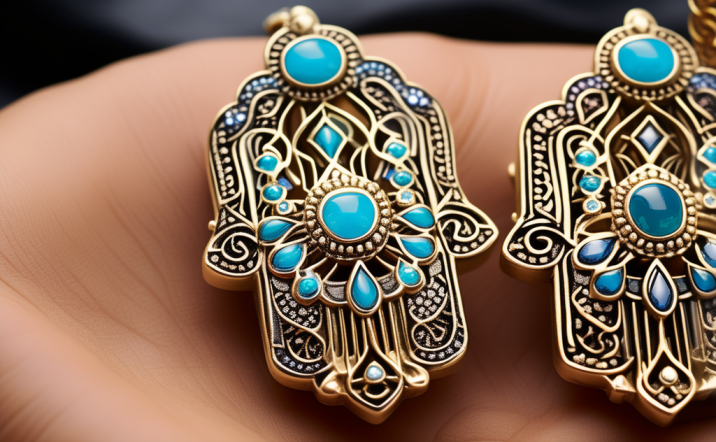
Beyond Adornment: Hamsa Jewelry as Talismans
Hamsa jewelry has become very popular, and not just because it looks nice. It also has deep meanings and is thought to protect. As amulets, many people wear Hamsa rings or bands because they think they will bring them happiness, keep away bad spirits, and protect them.
Wearing a Hamsa charm or band is important because of its old history and traditional ideas. Many tribes have been using the Hamsa hand, also known as the Hand of Fatima or the Hand of Miriam, for thousands of years. People think it stands for benefits, power, strength, and divine safety.
When making Hamsa jewelry, different styles and materials are used, and each one adds its own meaning and symbols. Popular styles include ones with a lot of filigree work, diamond accents, and metal details. These designs not only make the jewelry look better, but they also have meanings that go with each part.
A Hamsa pendant with an eye on it is called the “Evil Eye” Hamsa, for example. This pattern uses the powerful defensive powers of both the Evil Eye and the Hamsa hand to keep away bad energy and jealousy. Another well-liked pattern uses Hebrew letters inside the palm to represent lines from religious books or holy prayers.
Hamsa jewelry is made from a variety of materials and has a variety of designs. Sterling silver is often used because it is cheap and lasts a long time. It’s more affordable to buy gold-plated items than solid gold ones, but they still look fancy. There are even handmade pieces made from valuable metals like real gold or platinum for people who want something truly one-of-a-kind.
For many people, wearing Hamsa jewelry is a way to show their faith or piety. As a steady reflection of what they believe, it gives them a sense of safety and comfort in their daily lives. Both men and women often wear the Hamsa hand, which goes against gender norms and appeals to people from all over the world.
Conclusion
Excellent work! You now know a lot more about the Hamsa Hand and what it means in different countries. The Hamsa Hand has a lot of cultural and spiritual value for many people, from where it came from and what it means to its role in supporting peace and divine protection. You can use the Hamsa Hand as a strong sign of unity and faith, whether you like the way it looks or want to protect yourself.
As you go on your trip, think about how the Hamsa Hand can help you make your own life more peaceful and understanding. Take comfort in its message of safety and use it to remember yourself to be kind and respectful to others. Whether it’s in the form of jewelry or art, the Hamsa Hand can be a part of your daily life and help bring you luck and peace.
It’s time to learn more about other symbols and ideas from other countries now that you have a better understanding of the Hamsa Hand. By accepting differences, we can make the world a better place for everyone, where all views are valued and honored.
Frequently Asked Questions
Ancient Middle Eastern societies, especially those in North Africa and the Middle East, are where the Hamsa Hand comes from. This picture is thought to have been used to keep away evil forces and bad luck.
The Hamsa Hand is now commonly used as a decoration item and a safety charm. It comes in a lot of different forms, like jewelry, home decor, and art. A lot of people also give it as gifts to wish others luck and safety.
The Fatima Hand, which is also called Khamsa or the Hand of Fatma, stands for strength, power, and benefits. People think it will bring them luck and keep away bad spirits. Each finger on the hand stands for a different thing, such as faith, love, luck, plenty, and safety.
The Hamsa Hand has connections to multiple religions including Judaism and Islam. In Jewish culture, it is often seen as a symbol of divine protection called the “Hand of Miriam.” In Islamic tradition, it is known as the “Hand of Fatima” after Prophet Muhammad’s daughter.
People are wearing more and more Hamsa jewelry because it looks nice and has traditional meaning. It’s a beautiful item that lets people show what they believe while also adding style to their clothes because of the detailed patterns and important meanings.

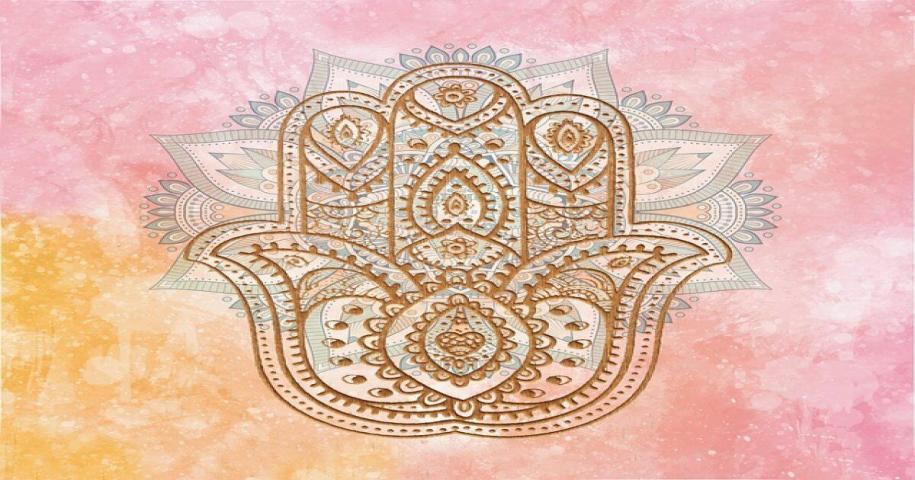
Leave a Reply